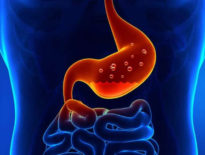Fish (especially fresh salmon, trout and mackerel) are good for their content of omega-3 oils. You can eat any reasonable quantity, every day if you like, preferably cooked by broiling, poaching, baking, stir-fry or grilling. Avoid breaded fish, since the fat retention and starch content add unnecessary calories. Sushi can be an excellent way to eat fish in their healthiest uncooked form. Avoid smoked fish in which the beneficial essential fatty acids have been damaged by the smoking process.
Farm-raised fish like catfish or “domesticated” trout may seem like the fish equivalent of organic meats, but actually they may contain more pollutants in their flesh than free-swimming ocean varieties. They are often given antibiotics and fed unnatural feeds such as grains, which may affect their nutrient composition.
The key idea is to diversify your fish menu—don’t eat all of one kind or from one source.
Shellfish, shrimp, lobster: Try these with a simple garnish of olive oil and lightly seared garlic in lieu of traditional butter sauces. Despite their cholesterol content, shrimp and shellfish do not increase your blood cholesterol levels.
Skinless breast of chicken or turkey; beefalo, or game meat: For meats, use the same methods of broiling, baking, stir-frying, or grilling that you use for fish.
Beans are a good source of protein at any meal. Eat as much as you like — it’s hard to overdose on beans. Use canned kidney beans, black beans, or chick peas as a garnish for your chef’s salad. Dehydrated bean soups make a good snack.
Eat eight ounces of plain low-fat yogurt flavored with ginger, cinnamon or fresh spices instead of stewed fruits and sugar.
You can have eggs (poached, hard-boiled, or scrambled) three times a week. Omelettes are a wonderful opportunity to stretch the nutritive value of eggs. Avoid using cheese, instead sauté greens, onions, green peppers, tomatoes or spinach to add to your omelette. Use Olive or Canola Oils.
Fresh Vegetables and Greens
Eat green leafy vegetables, salads and sprouts daily (as much as you want). Use olive oil with lemon juice, garlic, ginger or vinegar as dressing. Store bought dressings are full of sugar, additives, and hydrogenated oils. Look for an Olive Oil and Vinegar store in your area and experiment with different flavor combinations! So good, and so good for you!
Avocados are relatively high in calories, but have minimal carbohydrate content and don’t induce carb cravings. Half an avocado daily can be an enjoyable snack.
Cabbage-family vegetables, including broccoli, cauliflower, and Brussels sprouts are best cooked lightly. Forget the soggy, overcooked, heavily buttered or creamed styles. Try them lightly sautéed, stir-fried, steamed, or uncooked with a healthy dip. A little shredded purple cabbage is a tasty addition to a salad or a stir-fry.
Healthy Drinks
Drink eight glasses of mineral or spring water per day, flavored with a dash of lemon or a squeeze of lime, if you like. Carbonated seltzer water is fine. Or make herbal teas–serve hot or cold.
Make fresh vegetable juice, such as carrot or beet juice with a juicer. Consider healthy green drinks. These are powder mixes of freezedried high-chlorophyll plants, like barley greens, spirulina, and bluegreen algae. These are a good source of phytonutrients, concentrated plant nutrients for immune support and cancer prevention.
Grains
Eat only four ounces of whole grains per day, such as brown rice, millet, bulgur wheat, buckwheat, quinoa, amaranth, barley or rolled oats. Limit the quantity, because these are carbohydrate sources. Limit the form to whole grains rather than breads and pasta to keep the glycemic index low.
There are several fiber-rich grains in kernel form that cook up like variants on rice. These make good side dishes. Or add them to casseroles or a stir-fry.
Many traditional dishes are based on whole or cracked grains, such as the Middle Eastern Tabouli, made from bulgur wheat, or the Eastern European Kasha, made from buckwheat.
Moderation
Rolled oats are okay for an occasional quick breakfast, but with routine use you might use up all your carbohydrates at breakfast, limiting your options later in the day. Starting the day with starchy food tends to lead to carb craving. Eating a poached egg or two with a small portion of rolled oats will slow the delivery of the carbohydrate calories.
Try eating two rice cakes per day as an alternative to bread. Garnish with hummus, bean paté, a slice of turkey or chicken breast, shrimp salad, or a low-fat yogurt.
Olive, canola, or flaxseed oils are the “good oils,” but try to limit your intake to two tablespoons a day.
2 ounces per day sesame seeds, pumpkin seeds, sunflower seeds, walnuts, hazelnuts, and almonds make a good snack food. Use them unsalted, raw or roasted.
Limit your fruit to one apple, pear, orange or half a grapefruit per day.
Eat Only Once or Twice Per Week
Corn, potatoes, sweet potatoes, winter squash, carrots, and beets because of their high carbohydrate content.
Other fruits, jams, jellies, fruit juice, and dried fruit because of their high sugar content.
Avoid
Commercially raised beef, veal, pork, lamb, organ meats, luncheon meats, sausages.
Alcoholic beverages, sweet sodas.
White rice and all flour products: breads, muffins, cookies, noodles, pasta, cakes, crackers, matzoh, breakfast cereals (except Wheatena, oatmeal, or oat bran).
Margarine, butter, lards, other oils.




